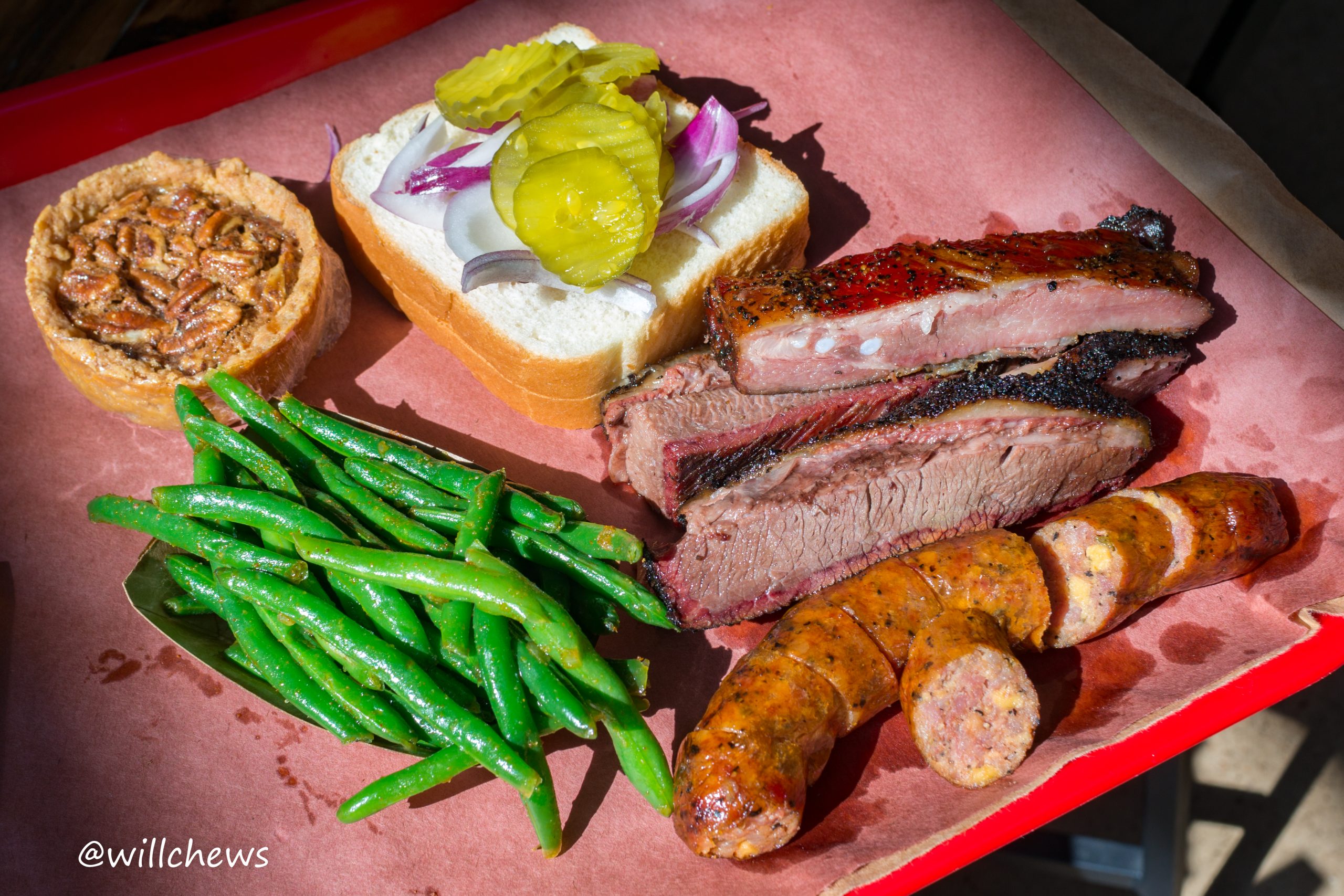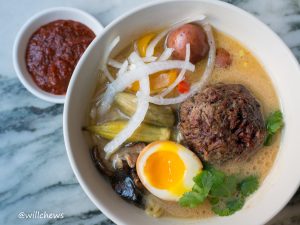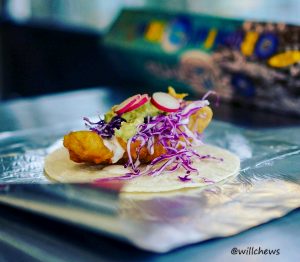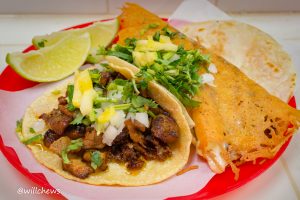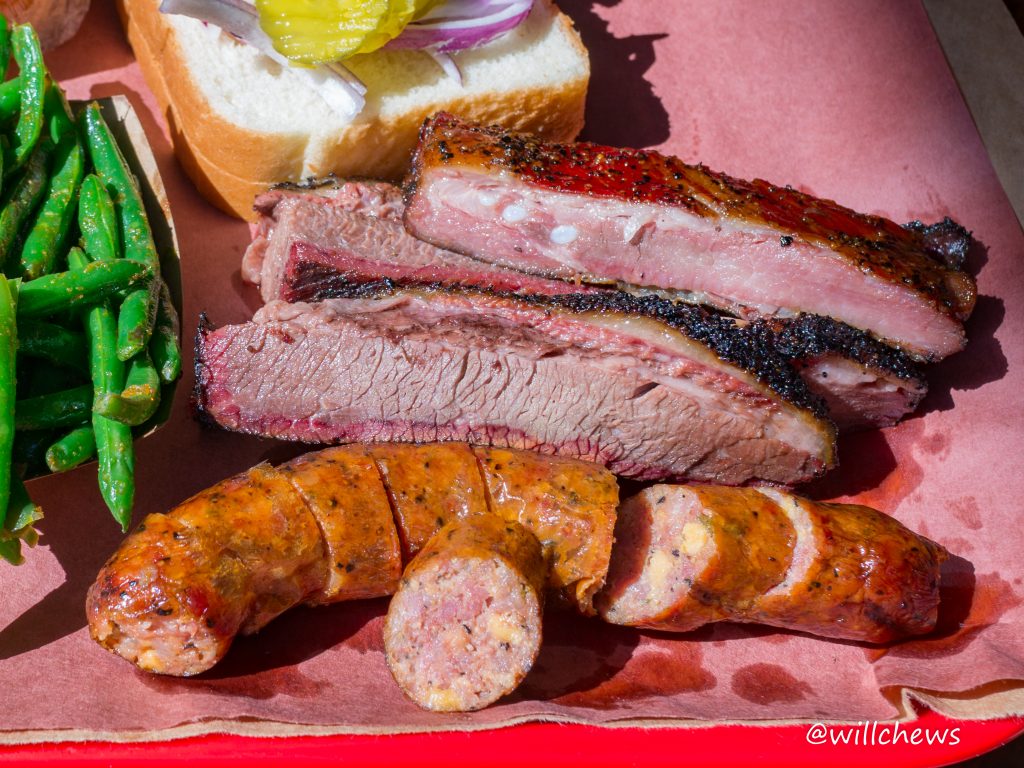
My tray contained Vaughn’s recommendation plus a pork rib, since the meat market serving-style made it difficult to resist ordering more than one originally intended. Of the platter, the beef jalapeno sausage was the clear standout, with the mix of jalapeno, cheese, and cured meat creating a terrific combination of flavors and textures that has stuck with me even a week later. As for the brisket, while Vaughn visited Terry Black’s for lunch shortly after I did and critiqued it for being dry, I found my piece to be juicy and moist, with the sinews clearly visible and interspersed with specks of fat. The pork ribs were fine, with the meat falling off easily without chipping much, but in the future I’d rather opt for another slice of brisket instead or even save up room for a beef rib. Greens were a good call; while they were cooked in plenty of…drippings? oil? tallow? butter?…that didn’t completely counteract the caloric effects of the meat, they were crisp, coated with garlic and seasoning, and a bright visual contrast against the rest of the tray.
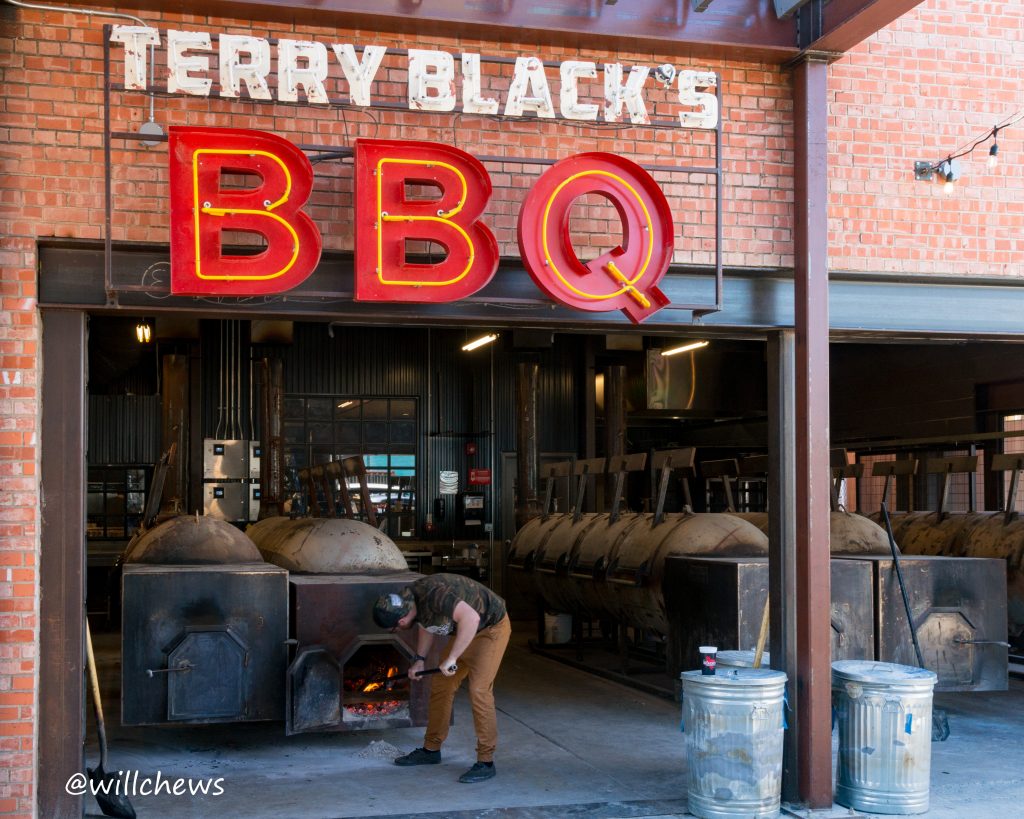
The other benefit to Terry Black’s is that its smokehouse is adjacent and accessible from the dining area, and that they’re open to tours (really more like grabbing one of the pitmen and peppering him with questions). D Magazine has a wonderful detailed explanation from Mark Black on how Terry Black’s preparation and operation, but I got my information firsthand from talking to Drew Lindsey, one of the pitmen. If I am ever to learn more about barbecue, Lindsey’s detailed explanations would be the start. Among the things I learned:
- TB uses post oak wood in its smokers because heavier/harder woods like it and hickory lead to a deeper, smokier taste in meats; fruit woods like cherrywood and applewood tend to have a lighter, sweeter flavor that pairs well with lighter BBQ such as chicken
- When eating brisket, the pink smoke ring–formed from the carbon from the smoke interacting with the gelatinized blood of the meat–and the golden brown middle section should be done enough to still show the individual muscle fibers with fat interlacing with the meat. The brisket slice itself should ideally hang limply from one’s fork, but not to the point where it’s falling off in pieces, which is a sign that it’s overcooked.
- Generally, the temperature in the smokers should be maintained at about 225 degrees F. Briskets are cooked for about 12 hours but are constantly rotated to even out the effects of their differing sizes and the uneven temperatures within each smoker (highest on the sides and ends). Ribs are cooked for 6 rather than 7-8 hours as normal since TB’s is no longer ramping up the temperature slowly, and Drew claims that there is no change in flavor from this shift in method.
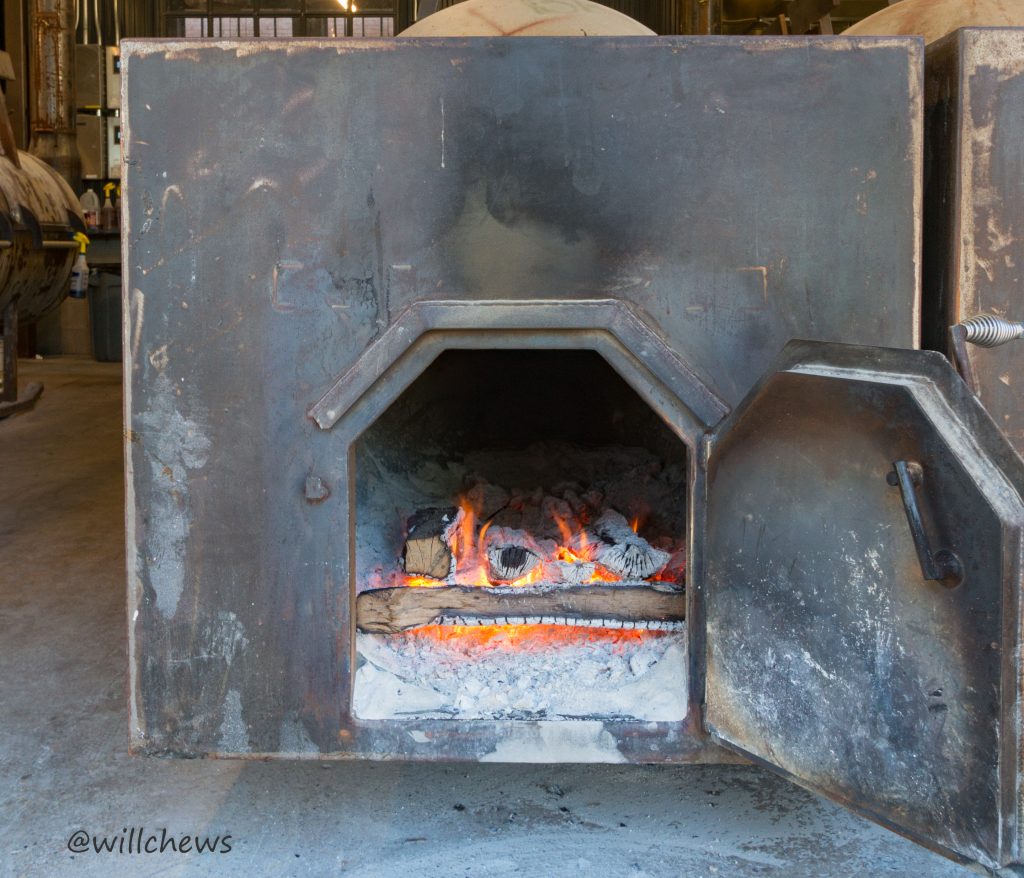

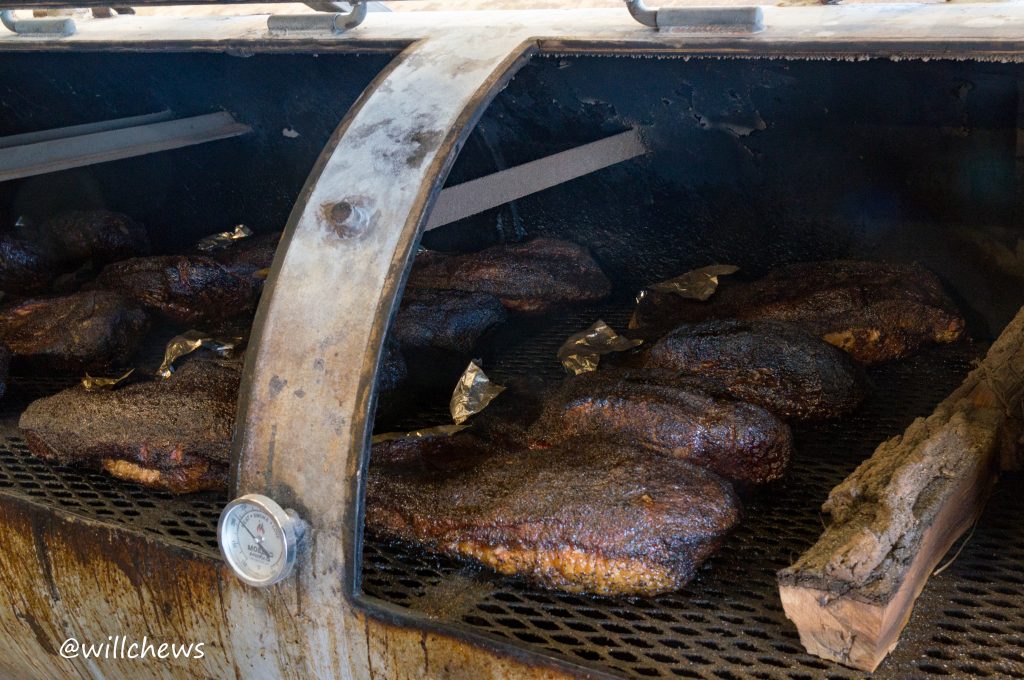
In Drew I found someone who’s interested in constantly wanting to experiment and improve barbecue through greater understanding of the flavor combinations, identification of ingredients, and constant, incremental improvements over time–someone who’s thought a lot about this. When I mentioned to him about my passion for ramen and how ramen chefs in Japan were constantly seeking to one-up each other through experimentation, he opined that the future development of barbecue may lie in an undiscovered cut, much like how brisket took off when it was previously ignored. Moreover, he suggested the barbecue joints need to do more to break out of the mold of standard sides–Mexican rice, mac & cheese, potato salad, green beans–and perhaps spicing it up with some seasonal sides.
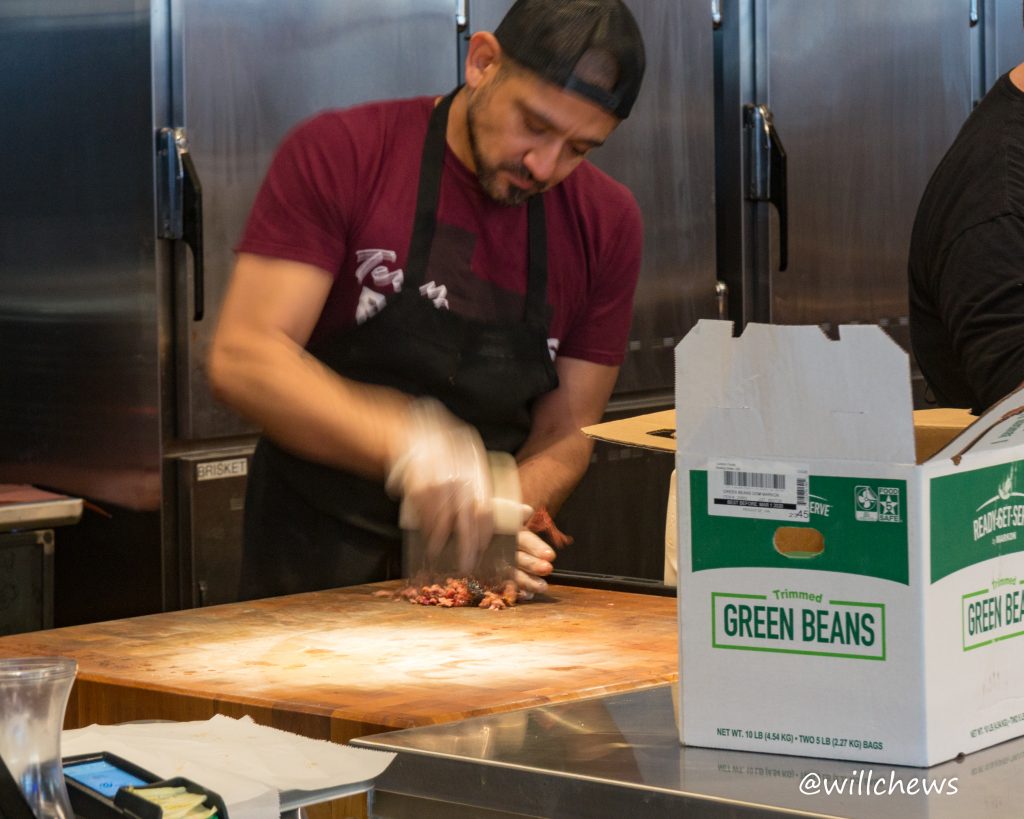
Terry Black’s BBQ
3025 Main St.
Dallas, TX 75226
